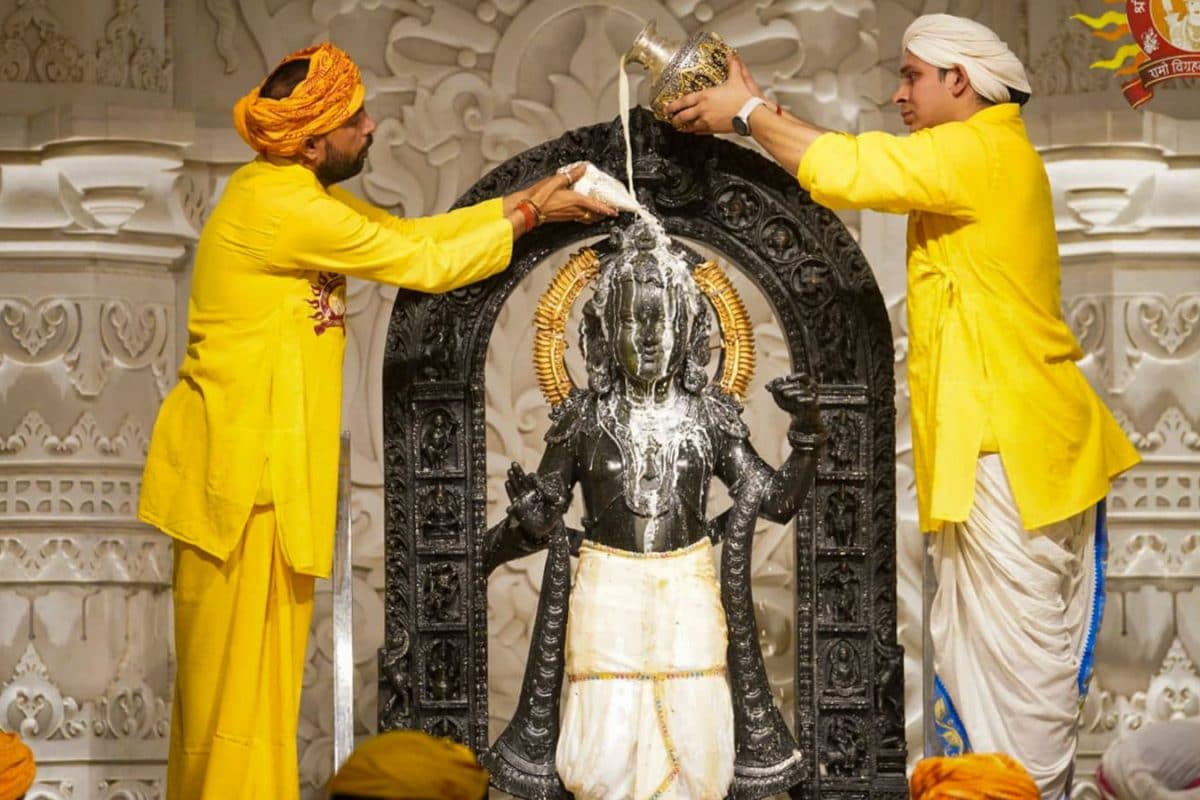

In Uttar Pradesh, the Bharatiya Janata Party (BJP) is increasingly employing a strategy that blends heritage revival with its electoral ambitions, particularly focusing on temple construction and restoration. This approach aims to consolidate Hindu votes and project the party as a custodian of Indian culture. However, this strategy also faces challenges and criticisms.
The construction and inauguration of the Ram Temple in Ayodhya serves as a central example of this strategy. The BJP has heavily promoted the temple as a symbol of resurgent nationalism and Hindu pride. This event was not just a religious milestone but also a significant political move, intended to resonate deeply with the Hindu majority in Uttar Pradesh and beyond. The BJP's campaign in Uttar Pradesh heavily emphasized the Ram Temple, with Prime Minister Narendra Modi accusing opposition parties of disrespecting Lord Rama and even suggesting they would demolish the temple if elected.
Beyond Ayodhya, the BJP's focus extends to other religious sites across Uttar Pradesh. The government has initiated projects aimed at developing and beautifying temples and pilgrimage routes, framing these efforts as essential for preserving cultural heritage and boosting tourism. For instance, there have been allegations by the Congress party that the BJP is altering the original forms of Hindu religious places in cities like Varanasi, Vrindavan and Mirzapur, turning them into tourist spots. Simultaneously, the BJP invokes figures like Ahilyabai Holkar, celebrated for her temple-building initiatives, to connect with Other Backward Classes (OBCs) and women, reinforcing its pro-Hindu stance.
This strategy is not without its challenges. The recent Lok Sabha elections revealed that while the Ram Temple issue did resonate with many, it wasn't enough to guarantee electoral success. In a surprising turn, the BJP lost the Faizabad constituency, where Ayodhya is located, to the Samajwadi Party (SP). This outcome suggests that local issues such as economic anxiety, farmer distress, and social justice concerns still hold significant sway over voters.
Moreover, the BJP's emphasis on Hindu nationalism has drawn criticism from opposition parties and minority groups. Critics argue that this approach marginalizes Muslims and other religious minorities, undermining India's pluralistic traditions. Concerns have also been raised about the potential misuse of government funds for religious projects and the impact on the original character of ancient cities.
The BJP's strategy in Uttar Pradesh reflects a broader trend of blending religion and politics to consolidate power. While heritage revival and temple construction can appeal to a large segment of the population, the party must also address socio-economic issues and ensure inclusivity to maintain broad-based support. The 2024 Lok Sabha election results in Uttar Pradesh serve as a reminder that cultural symbolism alone cannot guarantee electoral victories and that a balanced approach is necessary to navigate the state's complex political landscape.
In conclusion, the BJP's "Mission Temple" strategy in Uttar Pradesh represents a calculated effort to leverage cultural and religious sentiments for electoral gain. While the strategy has had some success, it also faces challenges from socio-economic realities and concerns about inclusivity. As Uttar Pradesh continues to be a politically crucial state, the BJP's ability to balance its heritage-focused agenda with broader governance issues will be critical in the lead-up to the 2027 assembly polls.